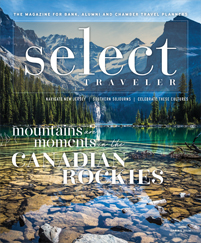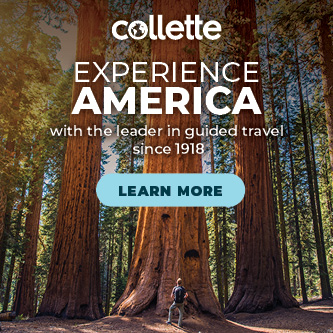Baby boomers are traveling, and they’re doing it in droves. So if you struggle to attract them to join your group tours, the problem is not them — it’s you.
Of all the generations of adults alive in the world today, boomers travel the most by far. Their parents, for whom the group tour industry was created, are quickly aging out of the market. Their children, Generation X, have their hands full raising young families. And millennials, though curious and largely uninhibited, don’t have the resources to travel as extensively as boomers do.
As a result, baby boomers are the prime demographic for sellers of travel. But many group travel coordinators struggle with attracting customers of this age group to their tours, and some travel clubs are in danger of closing as fewer and fewer of their faithful senior citizens are able to continue.
For your travel group to thrive, you’re going to have to make some changes to attract baby boomer customers.
Understanding Boomers
Baby boomers are the behemoths of the American travel industry. A recent AARP study estimated that boomers account for $120 billion in annual leisure travel spending, and an astounding 99 percent of boomers surveyed in that study reported that they plan to take a leisure trip in 2016.
The survey also found that most baby boomers expect to travel multiple times this year, with an average of four or five trips planned. For 32 percent of respondents, at least one of those trips will be international.
“One-third of all trips in the U.S. are done by boomers,” said Michael Sullivan of 50+ Communications Consulting, a marketing firm specializing in financial services and travel. “They take more annual trips than any other group. They purchase 80 percent of all luxury travel. And there’s a lot of interesting things developing.”
Sullivan said those developments include a surge in the popularity of girlfriends getaways and “mancations,” as well as activities such as ecotourism, adventure travel, multigenerational travel, spiritual trips and learning vacations.
“The thing that is important to them is ‘sight-doing’ versus sightseeing,” he said. “Boomers have a penchant for involvement in things and getting their hands dirty. It’s pretty significant.”
As a result, the kind of leisurely, staid, predictable tours that were winners with the World War II generation aren’t very appealing to boomers. In order to appeal to this generation, group travel planners will have to restructure the way they arrange tours, allowing for more immersion, cultural connection and free time.
“Plan flexible programs,” Sullivan said. “Boomers don’t want to be tied down all the time. That can be hard for some tour planners to accept. And cultural immersion is really important, along with active travel experiences. Hands-on learning is pretty significant, too. It’s one thing to talk about something, but another thing to do something about it.”
There are some other key differences between boomers and their parents’ generation, Sullivan said. Baby boomers are much more likely than their parents to try adventure activities such as kayaking, scuba diving, hiking or skiing, and they will be drawn to group tours that allow them to do that. And boomers appear less thrifty than the previous generation.
“If you look at their bank accounts, you’ll find that boomers are willing to spend more than their parents were,” Sullivan said. “They don’t save as much money as their parents did. They’re spending their money, and they will go for more expensive things if they are presented in the right way.”
A Success Story
Some organizations in the group travel industry have found ways to succeed with boomers. The Globus family of brands, which includes the independent-tour arm Monograms and a river cruise line called Avalon, is seeing a lot of business from boomers in its most innovative products.
“We have found that the most success with the boomer market has been with Avalon,” said Joanna Dyer, Globus’ national groups and specialty markets manager. “We encourage people to do the included excursions, but we’re finding that a lot want to venture out on their own, take optional excursions or utilize the cruise director to find hidden gems.
“That breaks away from the tradition of group travel because, traditionally, you want to keep everyone in the group together. But boomers want to break off and explore on their own. Then you can still come back and enjoy dinner together with your group.”
Trip length is also an important consideration for groups looking to attract more boomers. Traditional group tours often last more than a week, with some international tours dragging on for up to 20 days. Boomers, some of whom are still working, don’t like to commit to such long trips.
“Time is of the essence for boomers,” Dyer said. “We’re seeing more of them looking for seven-night trips because they don’t want to miss too much work. So the two-week trip isn’t a good way to go. Get all the value you can pack into one week.”
Value is still important to boomers, but because they aren’t as thrifty as their parents, they perceive value differently. Instead of looking for low-cost options, Dyer said, boomers who take group trips want high-value experiences to which they wouldn’t necessarily have access if they traveled on their own.
“They’re a little more adventurous, and they want experiences like cooking classes or having a meal in someone’s home,” she said. “Those rich cultural experiences are setting them apart. You can really catch their eye with uniqueness. Make them feel like they are having a unique experience, and make them feel special.”









